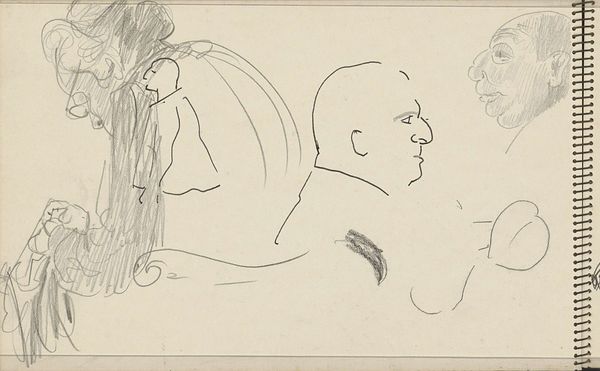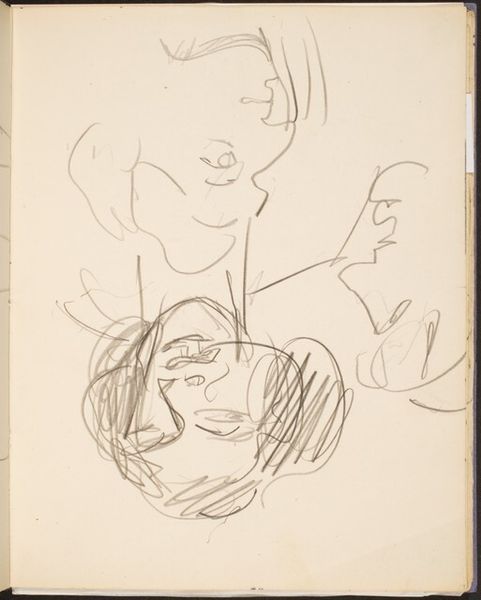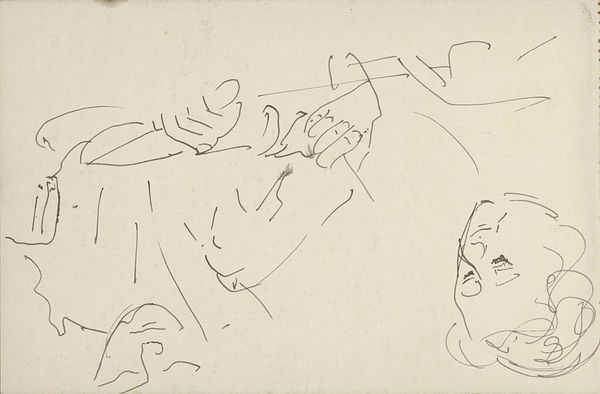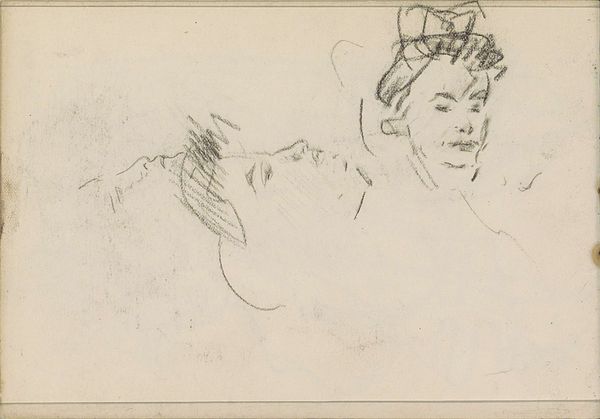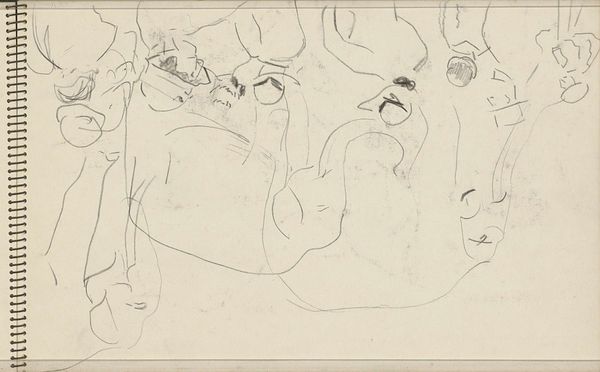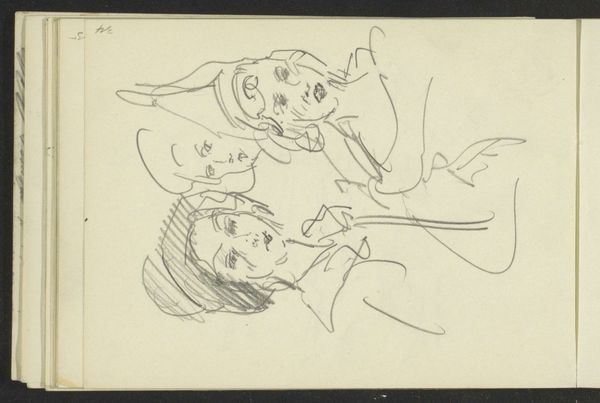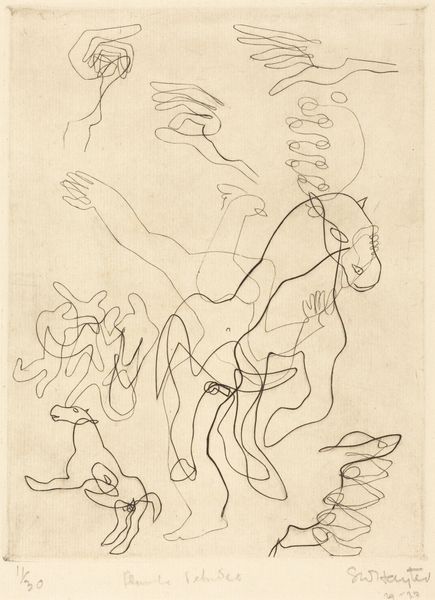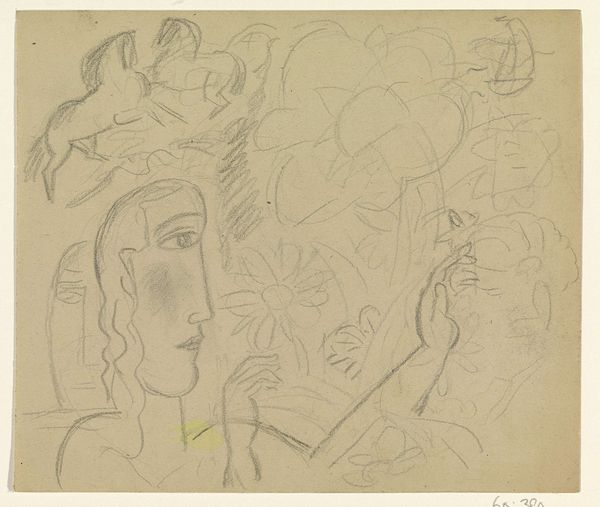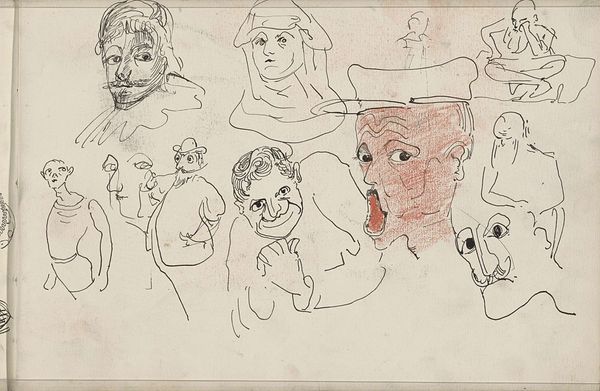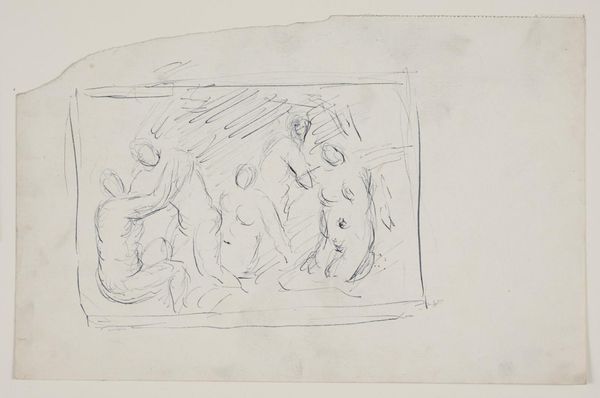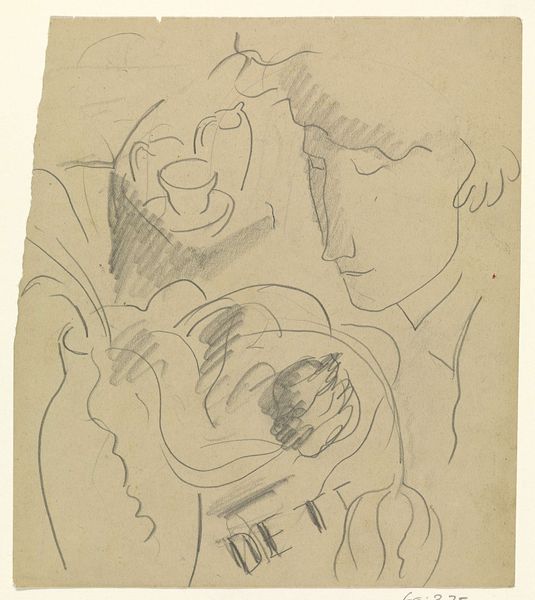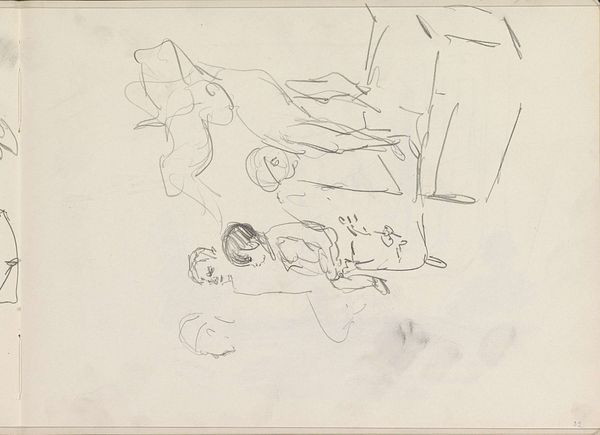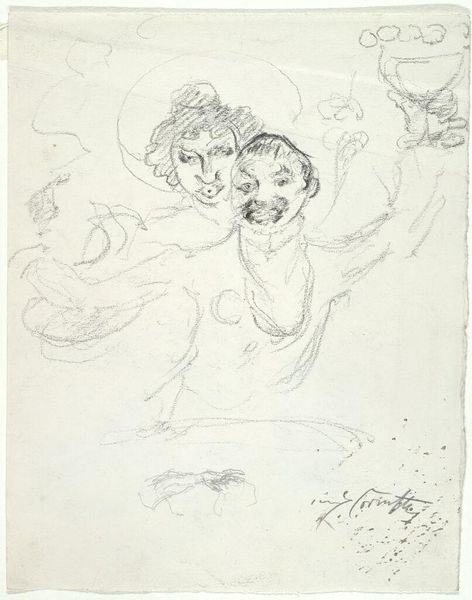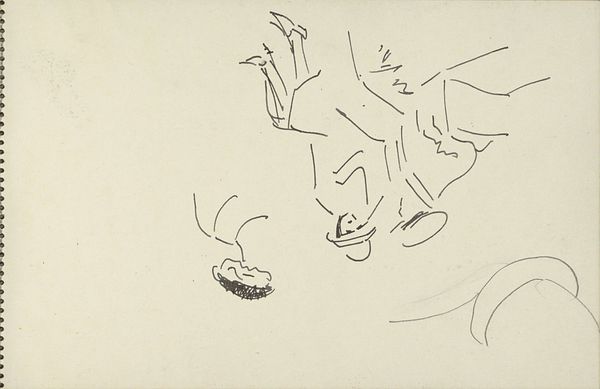
drawing, ink, pen
#
portrait
#
drawing
#
imaginative character sketch
#
art-nouveau
#
caricature
#
figuration
#
personal sketchbook
#
ink
#
idea generation sketch
#
sketchwork
#
ink drawing experimentation
#
pen-ink sketch
#
line
#
sketchbook drawing
#
pen
#
storyboard and sketchbook work
#
sketchbook art
#
initial sketch
Copyright: Rijks Museum: Open Domain
Curator: These sprightly characters are brought to us from a page in the sketchbook of Carel Adolph Lion Cachet, sometime between 1895 and 1900. It’s called "Karikaturale koppen," or "Caricatural Heads," and it's an ink drawing held here at the Rijksmuseum. What’s your first impression? Editor: Utterly whimsical! They remind me of puppets or players on a strange, distorted stage. Is this lighthearted mockery, or is there something deeper being conveyed? Curator: Cachet was working during a really interesting time, when Art Nouveau was in full swing. You can see it here, how he delights in the power of the line, allowing its curves and flourishes to define the personality and even the emotional state of his subjects. Editor: Absolutely. I think there's a tension here between celebrating individuality through caricature and perhaps critiquing the social types of his era. These 'heads' seem to exaggerate features to highlight certain characteristics—status, perhaps, or profession? The one on the left looks almost like a Dickensian miser. Curator: Ha! He does, doesn't he? Almost gleefully malevolent. You know, Cachet was deeply interested in craft and the handmade. And his exploration through portraiture, as evidenced here, is far removed from the static formal portraiture of past eras, no? Editor: Definitely. It’s pushing towards something rawer, something performative. I'm wondering how we can view these distorted heads as embodiments of societal anxiety from the turn of the century? Caricature has often served as a potent form of political commentary. It enables you to critique authority under the guise of humor... a tool for social reform, perhaps? Curator: Hmm, and Cachet did live through a period of rapid social and political upheaval in the Netherlands. The late 19th century saw the rise of socialism and growing calls for democratization. These caricatures perhaps gave form to some of these tensions. Editor: Exactly. It really does allow you to peer into the psychology of the era... Curator: So, through ink and paper, we stumble upon more than just faces; perhaps a mirror reflecting a society at a fascinating crossroads. Editor: Absolutely! And by viewing sketches like these, we might recognize familiar absurdities, persistent inequalities, and power structures of our own moment.
Comments
No comments
Be the first to comment and join the conversation on the ultimate creative platform.
